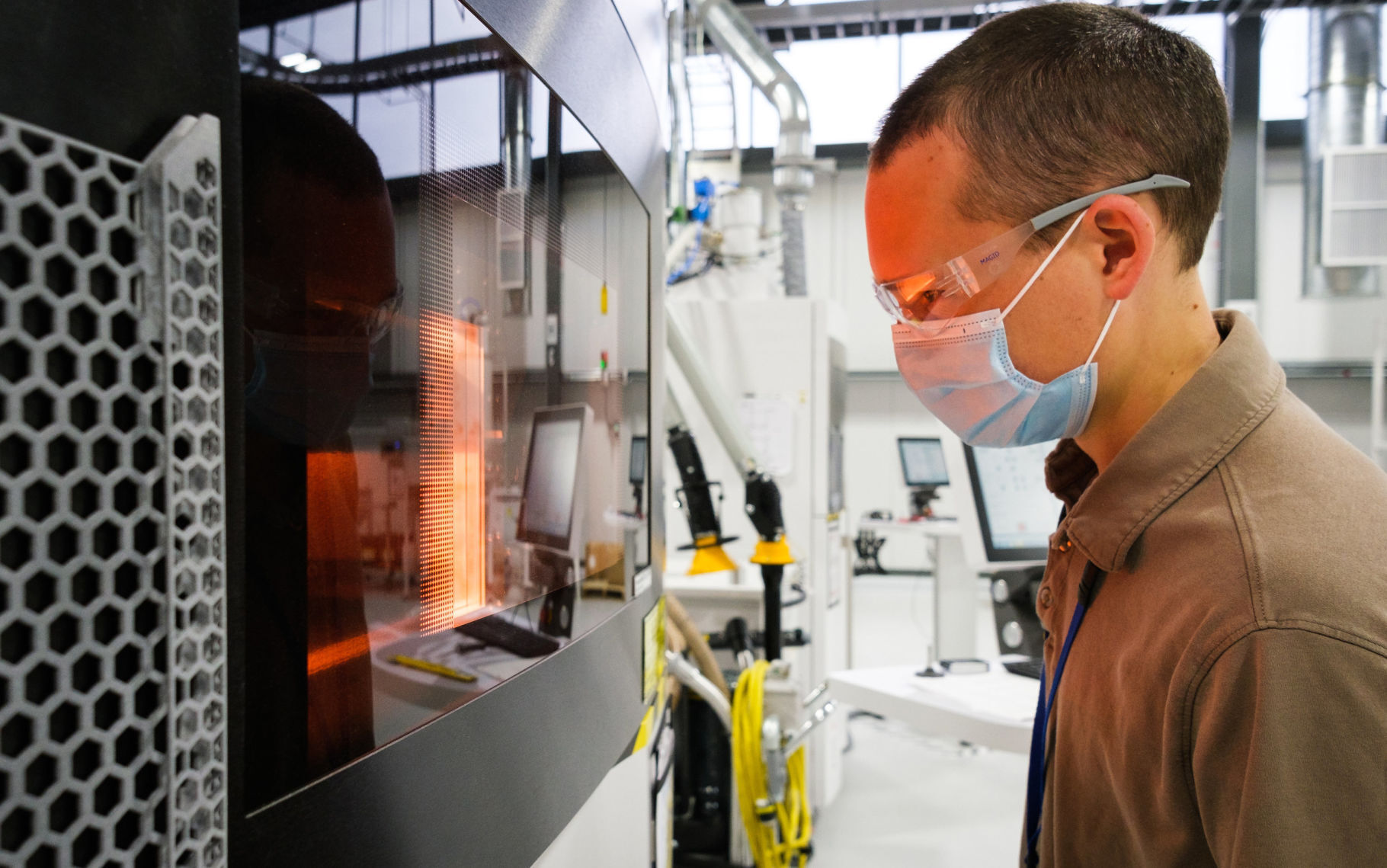General Motors is increasing its use of 3D printing across more production vehicles with a new 3D printing shop at its Global Technical Center in Warren, Mich.
The Additive Industrialization Center, which GM is just opening, will use 3D printing to make more production and car parts that will save the automaker money and speed up vehicle development, the automaker said.
Additive manufacturing is GM’s term for 3D printing technology used to make parts. GM has been using 3D printing for 30 years largely for vehicle prototypes, but now it is using it on production vehicles and for tools in manufacturing plants.
“The core component of GM’s transformation is becoming a more agile, innovative company, and 3D printing will play a critical role in that mission,” said Audley Brown, GM director of Additive Design and Materials Engineering. “Compared to traditional processes, 3D printing can produce parts in a matter of days versus weeks or months at a significantly lower cost.”
Big investment
GM built the 15,000-square foot Additive Industrialization Center during the past year despite the pandemic, said Ron Daul, GM director of Additive Manufacturing and Polymer Centers.
The investment in the center is “significant,” Daul said, but he declined to provide the actual figure. He said GM will earn a return on its investment with the time-savings in the vehicle development process.
“The various centers right now are an investment in General Motors. This is just one of many investments we’ve made in the last few years,” Daul said. “I would expect us to make more investments in production over the next five years because we believe in this technology.”
The facility includes 24 3D printers, which create polymer and metal product. Polymer is a synthetic material often used to describe plastics. GM has 75 total 3D-printers throughout its Tech Center in Warren.
GM used 3D printing earlier this year. It allowed GM to shift from making cars to making life-saving ventilators with Ventec Life Systems in a matter of days. GM has also used 3D printing in racing competitions. Now it will use the process to transform auto manufacturing.
“GM is increasingly applying the benefits of 3D printing, from prototype development to manufacturing tooling and production vehicles,” Daul said. “With the opening of the AIC, we’ll continue to accelerate adoption of this technology across the organization.”
Corvettes and Cadillacs
Many of the parts the AIC produces are functional prototypes used on preproduction cars for testing, GM said. Those functioning 3D printed prototypes can cut tooling costs and allow GM’s engineers to quickly make design changes and reduce development times.
For example, the team 3D printed the brake cooling ducts used to develop the 2020 Chevrolet Corvette. Those ducts saved nine weeks of development and reduced costs by over 60%, Brown said.
“Many recent product programs have benefited from 3D-printed prototype parts in one way or another,” said Brown.
Cadillac recently announced the CT4-V Blackwing and CT5-V Blackwing sedans will be the first GM production vehicles to have 3D-printed parts, including an emblem on the manual shifter knob, an electrical harness bracket and two HVAC ducts.
Cadillac engineers cut costs and improved efficiency when developing the high-performance sedans’ manual transmission by using 3D printing, Brown said.
“This is just the beginning,” Brown said. “Ultimately, we see the potential for 3D-printed parts to be used in a wide variety of production applications — from greater personalization options for new-vehicle buyers, to unique accessories and reproductions of classic car parts.”
Tools for Arlington
For now, GM is limiting the use of 3D-printed parts to low-production vehicles; that’s where it is most cost-effective, said Ali Shabbir, GM engineering group manager of Additive Manufacturing and Design Product Applications. But as the technology develops, there might be room for it to be used on large-volume vehicles such as the Chevrolet Silverado pickup, he said.
Beyond its cars, GM is producing many 3D-printed tools for assembling vehicles. GM can consolidate the components of a part into a single, optimized design, resulting in lighter and less complex tools by using 3D printing of tools, Brown said.
For example, GM makes its highly profitable full-sized SUVs at Arlington Assembly in Texas. For the launch of this year’s new models, GM 3D-printed nearly 100 hand tools for Arlington’s body shop.
GM delivered the tools to the plant in less than four weeks versus the two months it would take to make aluminum tools. Also, the aluminum tools would weigh 10 to 40 pounds, whereas 3D-printed tools are made of a nylon carbon fiber composite and weigh just 3 pounds, Daul said.
“This is at the critical time when we are changing the plant over to launch the new models,” Daul said. “Ultimately, 3D printing helps accelerate new vehicle launches like our full-size SUVs.”


